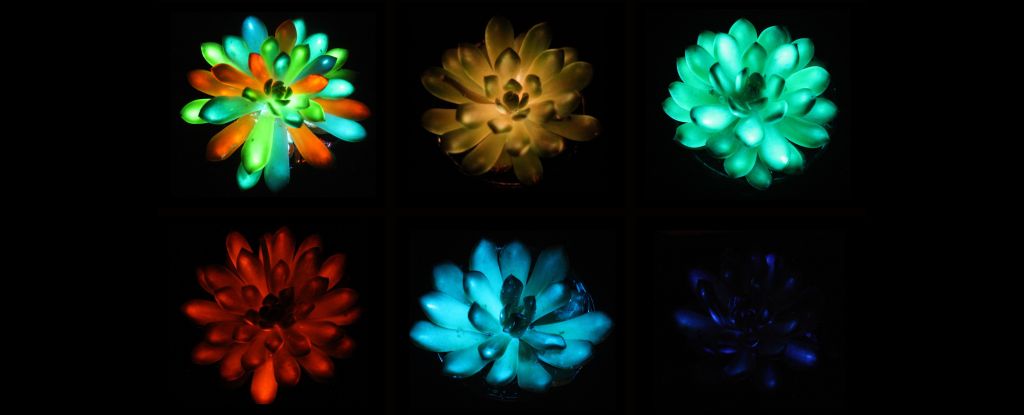
A team of scientists at South China Agricultural University has successfully created succulents that glow in the dark, offering a potential breakthrough in bioluminescent plants. This innovative development allows the plants to recharge using sunlight and emit a spectrum of colors, transforming the way we envision plant life in our homes and gardens.
The research team, led by biologist Shuting Liu, developed a method to treat each succulent leaf with phosphor particles, similar to those found in glow-in-the-dark toys. This technique presents a unique opportunity to create a low-cost, solar-powered lighting source that mimics the natural glow of organisms like fireflies.
Creating glowing plants has often posed challenges. Larger phosphor particles tend to glow more brightly but do not permeate the plant effectively. Conversely, smaller particles can disperse quickly but may lack intensity. The researchers determined that a particle size of 7 micrometers, comparable to a human red blood cell, provided the best results. Surprisingly, densely tissued succulents exhibited the strongest and most even glow, contrary to initial expectations that airier plants would perform better.
Liu explained, “It was really unexpected. The particles diffused in just seconds, and the entire succulent leaf glowed.” This discovery opens the door to using these glowing succulents as a sustainable lighting alternative, with the potential to illuminate spaces like gardens or homes at night.
After recharging, these succulents provide light for approximately two hours, similar to the duration of glow-in-the-dark toys. The initial experiments indicate the possibility of developing a rainbow of colors, including red, green, violet, and blue. With sufficient quantities, these plants could yield enough light for reading or ambient illumination.
The next phase of the research focuses on enhancing the longevity of the glow. Liu remarked on the seamless integration of human-made materials with the natural structure of the plants. “The way they integrate is almost magical. It creates a special kind of functionality,” she said.
The findings have been documented in the scientific journal Matter, highlighting the innovative approach taken by the team at South China Agricultural University. As scientists continue to explore the potential of bioluminescent plants, the vision of glowing greenery transforming urban landscapes may soon become a reality.






